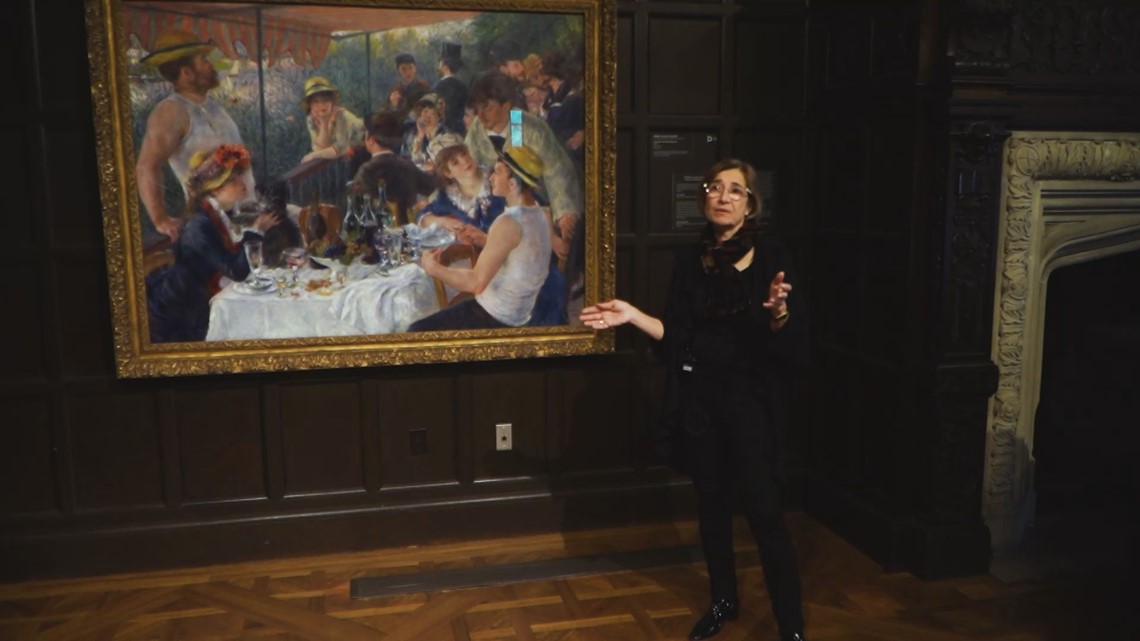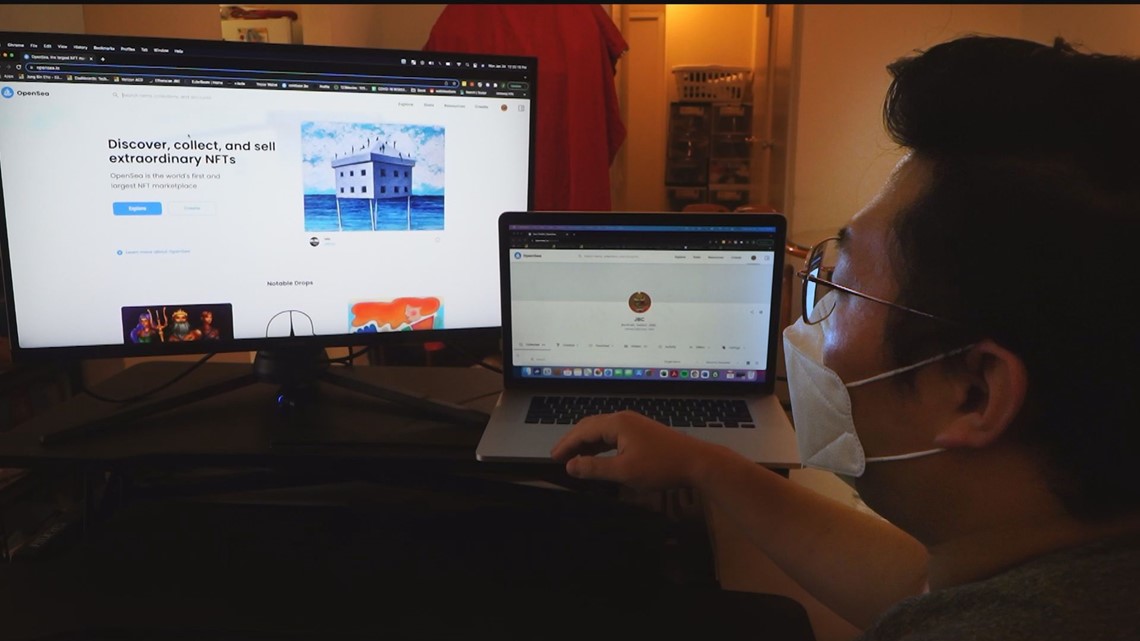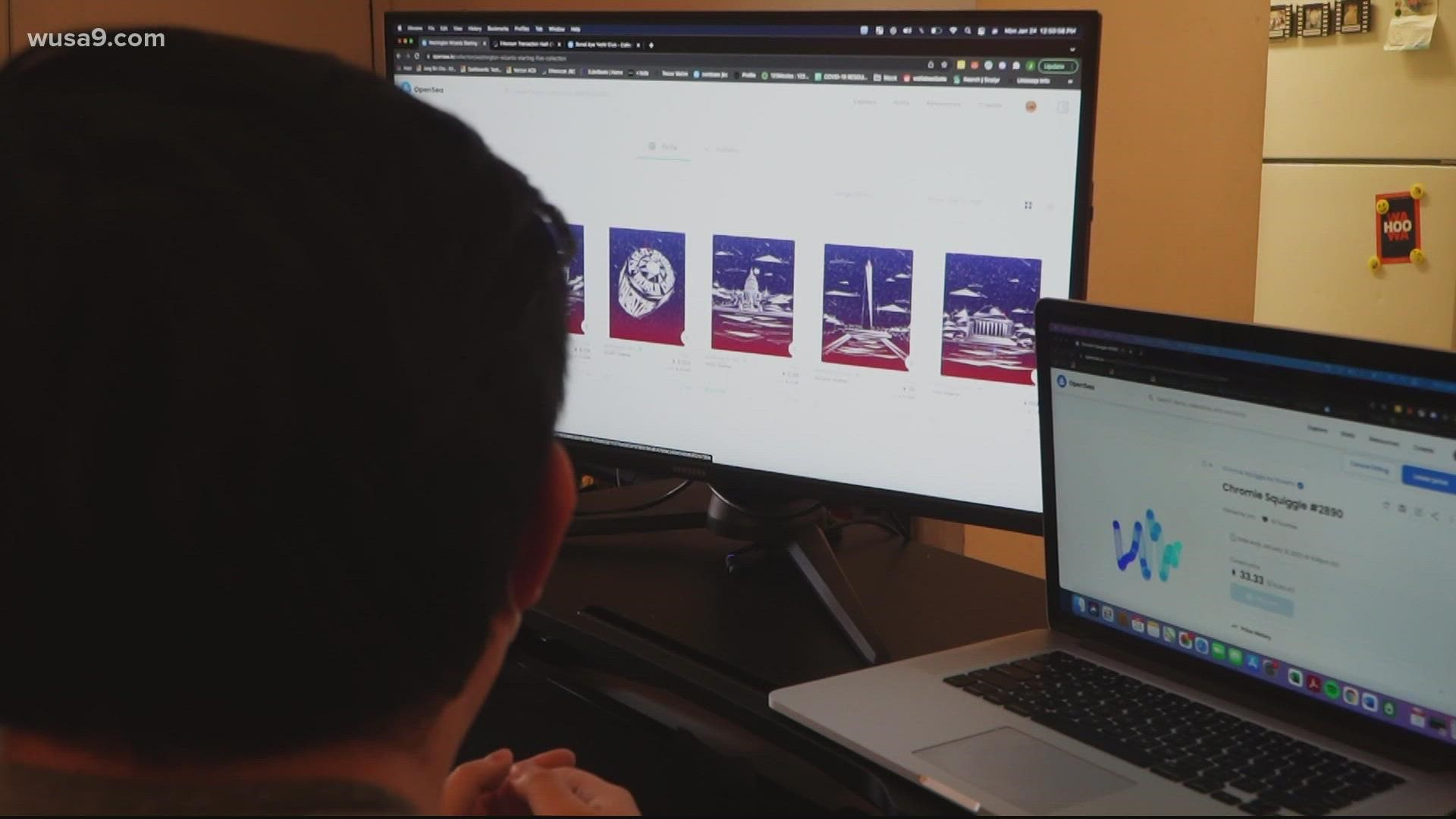WASHINGTON — Inside the Phillips Collection in Dupont Circle, value hangs on the wall. When you enter the music room, and look to the side of the early 20th century fireplace, you come face to face with a colorful Renoir painting: The Luncheon of the Boat Party.
“[It’s worth] millions, “ Senior Curator Vesela Sretenović smiled. “Many, many zeroes.”
Sretenović has dedicated her life to the study of art. Her career has spanned the globe and every medium imaginable. On this morning, I wanted to know what makes a painting, specifically this Renoir painting, worth millions?
“All the Renoirs are extremely valuable. But it depends on the medium, he did a lot of pastels, he did oils," she said, motioning to the painting, "Obviously this is a certain size, and it is art history.”


We stood in the music room and gazed at "The Luncheon of the Boat Party" for several minutes. In that short stretch of time, somewhere on the vast terminals of the internet, hundreds of pieces of digital art changed hands at a value, normally reserved for famous artists.
“[This week] a Cryptopunk sold for 67.5 Ethereum, which in terms of USD value equals $152,000,” Jungbin Cho said.
Cho is a new breed of art investor. The Northern Virginia native has been buying and selling digital art for the last year. His choice of medium is a digital phenomenon known as NFTs, or non-fungible tokens.
“I guess the biggest news probably came around springtime [of 2021], when an artist named Beeple came out with his 5,000-day collection and that sold at auction for like $69 million,” Cho smiled.


It is a staggering sum for an object that exists online and is northing more than a pattern of 1s and 0s that make up the digital file.
How did something that lives completely online sell for as much as a Renoir?
It’s a question best left up to University of Maryland Professor of Management and Entrepreneurship David Kirsch.
“Part of what’s attractive to investors about NFTs is that we’re not really sure what they are,” he laughed.
“I mean we know what they are, and we can describe them technically, but we don’t know what they will be.”
Kirsch’s area of focus tends to be on market bubbles, from fads to new technology. NFTs are right in wheelhouse.
He explained an NFT starts as a digital file: an image, a sound, or video. The creator then adds another layer of code on it. That code then registers that file on the ledger of the internet, what is called the Blockchain.
It’s that authentication that makes it unique.
“I can take a picture of this wall and share it with you or-I can take a picture of this wall make it into an NFT,” Kirsch said. “Then it is a certified, singular version of that picture of that wall.”
The true value is in that uniqueness. That value Jungbin Cho started to see in early 2021, which led him into trading NFTs.
To buy NFTs you need to go to an online marketplace. Cho uses OpenSea. He calls it the eBay of NFTs.
You can’t buy them unless you convert your dollars into a cryptocurrency like Bitcoin or Ethereum. Then you can place a bid on OpenSea for a piece of digital art.
“In terms of entities, I own several hundred,” Cho said.
Those NFTs run the spectrum. He has some NFTs that look like squiggles, to profile pictures, to sports team images. Some of the NFTs have special bonuses, like the one he bought from the Washington Wizards.
“(The) third starter (NFT) gave me a basketball ticket and a jersey,” he said. “They let you pick the jersey, I got Bradley Beal, of course.”


Some NFTs he got were free. At least one is now valued at more than $10,000. Cho sees digital art as an investment. But he also recognizes what drives NFT value is speculation. He has an argument in favor of that.
“Stocks are basically the same way, it’s very speculative,” he said. “I mean, let’s say Jerome Powell comes out with a negative comment, [the markets] could just go down. That’s not based on a company’s income ... That’s lot of speculation, too.”
David Kirsch is a little more blunt about the future of NFTs.
“If you want my honest answer, I’m going like 99% fad, 1% business development on the NFTS” he approximated.
Back in the Phillips Gallery, Vesela Sretenović took one look at an NFT valued at $200,000.
“That makes me extremely sad,” she sighed.
As creative and abstract as art can be, she doesn’t see the dollar value or the cultural value in NFTs, yet.
“[There is] no relationship building, no connection, which is really the meaning of art,” she went on. “There is no meaning to me in this. It’s very shallow and decorative and mechanical. “
Two worlds of art — centuries apart.

